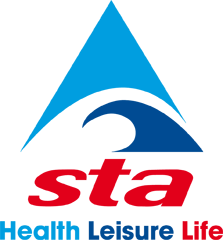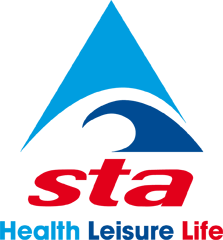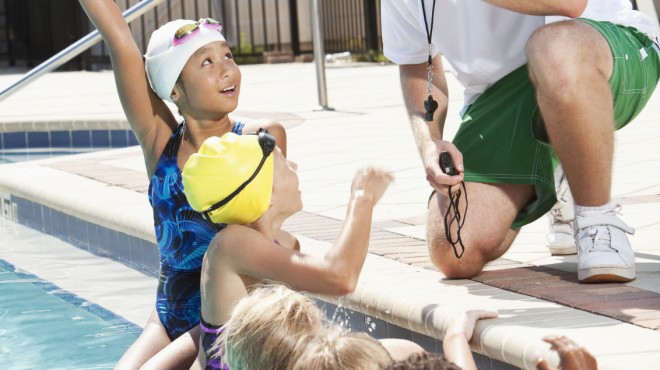Supporting Women in Sport
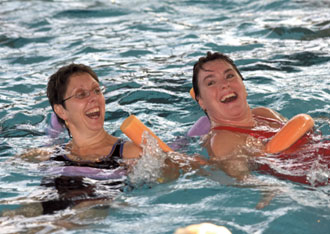
Launched in January 2015, This Girl Can is a national campaign developed by Sport England to inspire more women and girls to wiggle, jiggle, move and prove that judgement is a barrier that can be overcome.
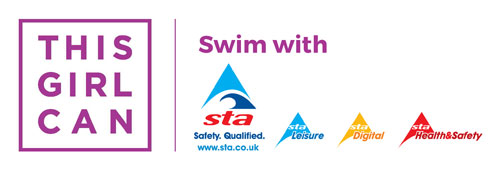
STA is proud to support this campaign and promote the benefits of swimming and aquatic exercise to women of all ages and abilities.
- Did you know that swimming is a great form of low impact exercise and one of the fastest ways to improve your fitness levels?
- Did you know that swimming burns more calories than many other sports?
- Did you know that swimming exercises more muscle groups than other sport – giving you the ultimate total body workout?
Swimming or exercising in the water is a fantastic way to get fit as well as stay fit. The unique physical properties of water provide an ideal environment for exercise. The natural buoyancy of the water reduces weight-bearing stress, allowing a greater ease of movement with less strain on bones, joints and muscles.
The density of the water helps the toning effects and assists in the strengthening of muscles with greater balance and efficiency.
Turbulence, hydrostatic pressure, buoyancy, resistance and thermal conductivity are all properties that make water a magical environment in which to move.
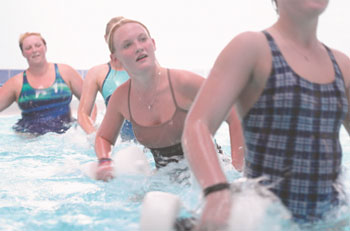
Aquatic fitness offers many options and different forms of training from lap swimming to water walking. Whether you are looking to improve your cardiovascular endurance or rehabilitate a chronic source of pain, exercising in the water can help. It is also one of only a few sports that can be undertaken by anyone, regardless of height, weight and build, size or age.
Most people exercise for at least one of the following reasons:
- Fitness
- Therapeutic
- Stress release
- Social
- Comfort
- Fun
So why exercise in water?
Water resistance
The amount of resistance from moving in water can range from 4 to 44 times that of air. Using the resistance of the water in exercise is like exercising with weights or machines on land, but safer.
Buoyancy
In chest depth water approximately 90% of your body weight is buoyant, therefore you really are bearing only 10% of your weight when you exercise. Exercise in the water is much safer on your joints and muscles, virtually stress free as a result. The only true 100% stress free – non-impact routine is in deep water aquatic sessions where your feet are not on the ground.
Water Temperature
The water temperature is the same all year long. You do not need to contend with the variability of the elements, heat, cold, rain, snow etc unless you are exercising in an outdoor pool environment then safety aspects will need to be considered.
Cooling Effect
Because your constant movement in water generates up to 85% of your body heat during this exercise, water that is cooler than your core body temperature is continually moving around you, washing away sweat and cooling you while you are exercising. You never feel over-heated and sweaty.
Hydrostatic pressure
Hydrostatic pressure is the squeezing pressure of the water upon the body, as this force occurs it assists the venous returns back to the heart via partial pressure reducing the demand on the heart by up to 17bpm or 13% than that of someone exercising on land. This allows you to work longer in your training zone and use more fat as a fuel source. The Hydrostatic pressure also creates a massaging effect which helps sooth and comfort joints, muscles and internal organs.
Health benefits
- Reduce direct impact on joints
- Improved range of motion (joint flexibility)
- Improved muscle strength and endurance
- Improved muscle balance and posture
- Improved cardiovascular/respiratory system
- Specific desires can be aimed for within the programme
- Improved water confidence
- Potential to improve body composition by burning up to 550 cals per session
- Reduced demand on the heart due to hydrostatic pressure
- Quicker progression
- Social interaction
STA’s Top Swimming Tips
- Tip 1:
- Try and utilise all the strokes – breaststroke, butterfly, sidestroke, backstroke and front crawl, which all develop different muscle groups. The easiest of these for most swimmers are the sidestroke and backstroke. Once confidence is attained in swimming these, practice front crawl and breaststroke. Butterfly is by far the most difficult to master, and will require practice.
- Tip 2:
- Use hand paddles or pullbuoys when swimming, as they help work the shoulder and arm muscles.
- Tip 3:
- Add a kickboard (float) to a regular swim routine. Legs only laps will strengthen the leg muscles. Use different kicks: front crawl, breaststroke, sidestroke and butterfly. Not only does this work the leg and abdominal muscles, it also helps to perfect a stroke by focusing on only the leg movements.
- Tip 4:
- Stay moving. Constant movement burns more calories, and a higher level of fitness can be achieved. Keeping the heart rate elevated attains greater fitness. Between laps, try aqua-jogging using a flotation belt; another option is treading water. Both of these keep the heart rate up, while allowing a break from lap swimming.
- Tip 5:
- Be consistent. Swim regularly – once or twice a week if not more. Fitness goals can only be attained through consistency.
- Tip 6:
- Use swimming as a cross-training element to your regular workouts. Before a land workout, you can use the pool for a warm-up session. Swimming with increasing effort to gradually increase your heart rate and stimulate your muscle activity is easily accomplished in the water. After a land workout, swimming a few laps can help you cool-down, move blood through your muscles to help them recover, and help you relax.
- Tip 7:
- If swimming is not for you, but you still want to experience all the benefits of exercising in water try enrolling into a professionally-run Water Aerobic Exercise Class, i.e. Aquacise, or Synchronised Swimming. It not only provides a great work-out, but is also a great social outlet.
- Tip 8:
- Choose the type of swimming that’s right for you. Growing in popularity is open water swimming, but this often requires a higher level of strength, so it may be wise to build up your strength and confidence in the lanes of an indoor pool first.
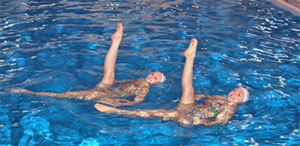
Finally, if you have a fear of the water, the best advice is to seek a STA qualified teacher that specialises in adult swimming sessions. They will be sympathetic to your concerns and will be able to provide the necessary expertise and guidance to help you take the plunge.
More Information
For details contact your nearest pool, or visit the STA Search facility on our website.
For further information on This Girl Can, visit their website.
Related article: Why Swimming is the Perfect Exercise in the Winter Months
- Categories
- Community
